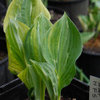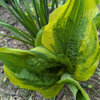Does this look like HVX?
bkay2000
12 years ago
Related Stories

INSIDE HOUZZHow Much Does a Remodel Cost, and How Long Does It Take?
The 2016 Houzz & Home survey asked 120,000 Houzzers about their renovation projects. Here’s what they said
Full Story
LIFEHouzz Call: What Does Summer Look Like at Your Home?
Kids, water, sunshine, backyards, cold drinks — share photos of what summer at home means to you
Full Story
MOST POPULARWhen Does a House Become a Home?
Getting settled can take more than arranging all your stuff. Discover how to make a real connection with where you live
Full Story
FUN HOUZZDoes Your Home Have a Hidden Message?
If you have ever left or found a message during a construction project, we want to see it!
Full Story
REMODELING GUIDESBathroom Workbook: How Much Does a Bathroom Remodel Cost?
Learn what features to expect for $3,000 to $100,000-plus, to help you plan your bathroom remodel
Full Story
DECORATING GUIDESWhat Does Your Inspiration Board Say About You?
Scraps pinned on a mood board may provide clues to your personality. See what your board reveals
Full Story
HOME TECHDoes Your Home Need an Operating System?
New technologies hope to unify the lawless frontier of home-automation products. Would they work for you?
Full Story
ARCHITECTURERoots of Style: Does Your House Have a Medieval Heritage?
Look to the Middle Ages to find where your home's steeply pitched roof, gables and more began
Full Story
HOUZZ TOURSHouzz Tour: Istanbul Apartment Does a Double Take
Two apartments and two contrasting design styles combine in a single stunning home with a view in Turkey
Full StoryMore Discussions











Gesila
Johnsp
Related Professionals
Barrington Hills Landscape Architects & Landscape Designers · Fillmore Landscape Architects & Landscape Designers · Lowell Landscape Architects & Landscape Designers · Crystal Landscape Contractors · Hawthorne Landscape Contractors · Lemay Landscape Contractors · Wells Landscape Contractors · Eastlake Landscape Contractors · Camp Springs Landscape Contractors · Hueytown Landscape Contractors · Canton Fence Contractors · Ellicott City Fence Contractors · Lincolnwood Fence Contractors · Memphis Fence Contractors · Spanaway Fence Contractorsthisismelissa
bkay2000Original Author
Pieter zone 7/8 B.C.
Steve Massachusetts
bkay2000Original Author
User
buckeye15
User
buckeye15
ken_adrian Adrian MI cold Z5
hosta-see
ctopher_mi
ctopher_mi
User
anniegolden
bkay2000Original Author
buckeye15